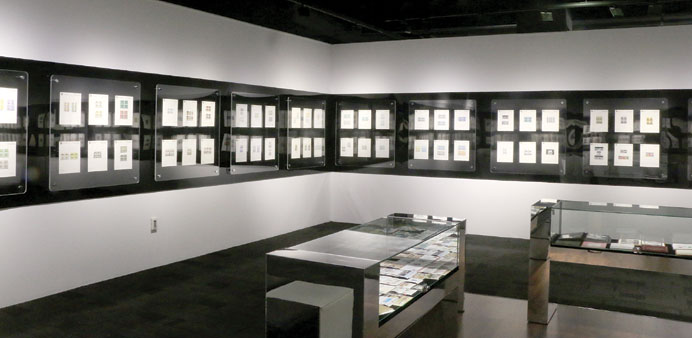VAST COLLECTION: The museum has thousands of stamps from Arab world in its collection. Photo: Umer Nangiana
By Umer Nangiana
A postage stamp is a small piece of paper that is purchased and displayed on an item of mail as evidence of payment of postage. They tell the history of countries, of people and events that shaped the world. Once created they never go unused. If no longer in use for postal services, they land in collectors’ albums.
People, as a popular hobby, have been collecting stamps for decades. Such private and public collections sprawl all over the world. One such major public collection of stamps from all over the Arab world is held by Arab Postal Stamp Museum at Katara Cultural Complex.
Boasting thousands of stamps from Middle East and North African region, the museum has arranged them sequentially to narrate a story of the evolution of the region itself and the rest of the world around it. Founded in 2010, the Arab Postal Stamp Museum at building 22A of Katara is a walk-in, free entrance museum.
The stamp collection covers 22 Arab countries with different themes. The museum also has some equipment that was used in the past at the post office and a small library that has various books on stamp collections. These books are valuable assets for all those interested in collecting stamps, giving them philatelic knowledge and help them study stamps.
The museum has collections dating back to 1920s besides the more recent ones issued in Qatar or elsewhere in the Middle East. In Qatar, stamps are still in circulation as a means of paying fees for letters and postal packages.
However, some countries authorise the production of postage stamps that have no postal use. They are intended instead solely for collectors. Yet, other countries issue large numbers of low denomination stamps that are bundled together in starter packs for new collectors.
Arab Postal Stamp Museum at Katara showcases some of the oldest stamps from countries like the Kingdom of Saudi Arabia besides the component states of United Arab Emirates (UAE), among others. The stamps provide a glimpse into the history of postal services in these countries.
In the Kingdom of Saudi Arabia, formerly known as the Kingdom of Nejd and Hejaz, the first stamps marked Saudi Arabia were issued on 1 January 1934. Between 1900 and 1908 a railway was built between Medina and Damascus known as the Hejaz Railway and a number of railway stamps were issued for use on the service.
Revenue stamps were also issued in connection with the financing of the railway. The first stamps of Hejaz were issued in October 1916. Stamps continued until 1925 and the many issues are noted for their complexity with many different printings and overprints that are often found inverted.
Regular issues of stamps have continued up to the present time, mostly on subjects relevant to life in Saudi Arabia and including a number of long-running definitive series. The UAE’s first official stamps were issued on 1 January 1973. Before then, the individual states issued their own stamps.
The stamps’ collections mostly maintain supplies through official reprints that are often printed by companies who have purchased their rights and such reprints see no postal use. All of these stamps are postmarked without ever having passed through the postal system.
Most national post offices produce stamps that would not be produced if there were no collectors. In Qatar, stamps collection is still a popular hobby and a number of philatelists flock to the museum every day. Besides the Arab countries, the museum also has collection of stamps from a large number of countries in the world including Muslim countries from other continents such as Africa and Asia.
The museum is open till 11pm during Ramadan and from 10am to 10pm rest of the year.



